- Home
- Richard Dawkins
The Greatest Show on Earth Page 37
The Greatest Show on Earth Read online
Page 37
* This is especially true of mutations of large effect. Think of a delicate machine, like a radio or a computer. A large mutation is equivalent to kicking it with a hobnailed boot, or cutting a wire at random and reconnecting it in a different place. It just might improve its performance, but it is not very likely. A small mutation, on the other hand, is equivalent to making a tiny adjustment to, say, one resistor, or to the tuning knob of a radio. The smaller the mutation, the more closely the probability of improvement approaches 50 per cent.
* It is also a favourite of my colleague Jerry Coyne. Why Evolution is True gives a wonderfully clear discussion of this example, which I recommend, along with the rest of his excellent book.
* Boyle’s Law states that, for a fixed quantity of gas at a given temperature, the pressure is inversely proportional to the volume. I have never forgotten Boyle’s Law since my class at school, Form 4B1, was taught a single lesson by the school’s senior science master, whose name was Bunjy. He was standing in for Bufty, our usual physics teacher, and we wrongly thought that, because of Bunjy’s extreme age (as we thought) and extreme short sight (as was obvious from his habit of reading a book in contact with his nose), we could ignore his discipline and tease him. How wrong we were. He kept the whole lot of us in for an extra detention lesson that afternoon, which he began by making us write in our notebooks: ‘Object of the lesson: To teach 4B1 good manners and Boyle’s Law.’
* Not to be confused with another Australian, Michael Denton, beloved of creationists who conveniently overlook the fact that, in his second book, Nature’s Destiny, he recanted his earlier anti-evolutionary stance, while remaining theistic.
CHAPTER 12
ARMS RACES AND ‘EVOLUTIONARY THEODICY’
EYES and nerves, sperm tubes, sinuses and backs are poorly designed from the point of view of individual welfare, but the imperfections make perfect sense in the light of evolution. The same applies to the larger economy of nature. An intelligent creator might be expected to have designed not just the bodies of individual animals and plants but also whole species, entire ecosystems. Nature might be expected to be a planned economy, carefully designed to eliminate extravagance and waste. It isn’t, and this chapter will show it.
THE SOLAR ECONOMY
The natural economy is solar-powered. Photons from the sun rain down upon the entire daytime surface of the planet. Many photons do nothing more useful than heat up a rock or a sandy beach. A few find their way into an eye – yours, or mine, or the compound eye of a shrimp or the parabolic reflector eye of a scallop. Some may happen to fall on a solar panel – either a man-made one like those that, in a fit of green zeal, I have just installed on my roof to heat the bathwater, or a green leaf, which is nature’s solar panel. Plants use solar energy to drive ‘uphill’ chemical syntheses, manufacturing organic fuels, primarily sugars. ‘Uphill’ means that the synthesis of sugar needs energy to drive it; by the same token, the sugar can later be ‘burned’ in a ‘downhill’ reaction that releases (a fraction of) the energy again to do useful work, for example muscular work, or the work of building a great tree trunk. The ‘downhill’ and ‘uphill’ analogy is with water flowing downhill from a high tank and driving water wheels to do useful work; or being energetically pumped uphill into the high tank, so that it can later be used to drive water wheels when it flows downhill again. At every stage of the energy economy, whether uphill or downhill, some energy is lost – no energy transaction is ever perfectly efficient. That is why patent offices don’t need even to look at designs for perpetual motion machines: they are implacably and forever impossible. You can’t use the downhill energy from a water wheel to pump the same amount of water uphill again so that it can drive the water wheel. There must always be some energy fed in from outside to compensate for the wastage – and that is where the sun comes in. I’ll return to this important theme in Chapter 13.
Much of the land surface of the Earth is covered by green leaves, which constitute a many-layered catchment for photons. If a photon is not caught by one leaf, it has a good chance of being caught by the one below. In a dense forest, not many photons make it to the ground uncaught, which is exactly why mature forests are such dark places in which to walk. Most of the photons that constitute our planet’s minute share of the sun’s rays hit water, and the surface layers of the sea swarm with single-celled green plants to catch them. Whether at sea or on land, the chemical process that traps photons and uses them to drive ‘uphill’ energy-consuming chemical reactions, manufacturing convenient energy-storage molecules such as sugars and starch, is called photosynthesis. It was invented, more than a billion years ago, by bacteria; and green bacteria still underlie most photosynthesis. I can say this because the chloroplasts – tiny green photosynthetic engines that actually do the business of photosynthesis in all leaves – are themselves the direct descendants of green bacteria. Indeed, since they still autonomously reproduce themselves after the manner of bacteria, within plant cells, we can justly say that they still are bacteria, albeit heavily dependent on the leaves that house them and to which they give their colour. It appears that originally free-living green bacteria were hijacked into plant cells, where they eventually evolved into what we now call chloroplasts.
And it is a neatly symmetrical fact that, just as the uphill chemistry of life is mostly taken care of by green bacteria thriving inside plant cells, so too the downhill chemistry of metabolism – the slow burning of sugars and other fuels to release energy in cells of both animals and plants – is the special expertise of another class of bacteria, once free-living but now reproducing themselves in larger cells, where they are known as mitochondria. Mitochondria and chloroplasts, descended from different kinds of bacteria, each built up their complementary chemical wizardries billions of years before the existence of any living organism visible to the naked eye. Both were later shanghaied for their chemical skills, and today they multiply inside the liquid interiors of the much larger and more complicated cells of creatures big enough for us to see and touch – plant cells in the case of chloroplasts, plant and animal cells in the case of mitochondria.
The solar energy captured by chloroplasts in plants lies at the base of complicated food chains, in which the energy passes from plants through herbivores, which may be insects, through carnivores, which may be insects or insectivores as well as wolves and leopards, through scavengers such as vultures and dung beetles, and eventually to agents of decay such as fungi and bacteria. At every stage of these food chains, some of the energy is wasted as heat as it passes through, while some of it is used to drive biological processes such as muscle contraction. No new energy is added after the initial input from the sun. With a few interesting but minor exceptions such as the denizens of deep ocean ‘smokers’ whose energy comes from volcanic sources, all the energy that drives life comes ultimately from sunlight, trapped by plants.
Look at a single tall tree standing proud in the middle of an open area. Why is it so tall? Not to be closer to the sun! That long trunk could be shortened until the crown of the tree was splayed out over the ground, with no loss in photons and huge savings in cost. So why go to all that expense of pushing the crown of the tree up towards the sky? The answer eludes us until we realize that the natural habitat of such a tree is a forest. Trees are tall to overtop rival trees – of the same and other species. Don’t be misled when you see a tree in an open field or garden that has leafy branches all the way down to the ground. It has that well-rounded shape so beloved of sergeant instructors because it is in an open field or garden.* You are seeing it out of its natural habitat, which is a dense forest. The natural shape of a forest tree is tall and bare-trunked, with most of the branches and leaves near the top – in the canopy which bears the brunt of the photon rain. And now, here’s an odd thought. If only all the trees in the forest could come to some agreement – like a trades union restrictive practice – to grow no higher than, say, 10 feet, every one would benefit. The entire community – the entire eco
system – could gain from the savings in wood, and energy, which are consumed in building up those towering and costly trunks.
The difficulty of cultivating such agreements of mutual restraint is well known, even in human affairs where we can potentially deploy the gift of foresight. A familiar example is a suggested agreement to sit, rather than stand, when watching a spectacle such as a horse race. If everybody sat, tall people would still get a better view than short people, just as they would if everybody stood, but with the advantage that sitting is more comfortable for everybody. The problems start when one short person sitting behind a tall person stands, to get a better view. Immediately, the person sitting behind him stands, in order to see anything at all. A wave of standing sweeps around the field, until everybody is standing. In the end, everybody is worse off than they would be if they had all stayed sitting.
In a typical mature forest, the canopy can be thought of as an aerial meadow, just like a rolling grassland prairie, but raised on stilts. The canopy is gathering solar energy at much the same rate as a grassland prairie would. But a substantial proportion of the energy is ‘wasted’ by being fed straight into the stilts, which do nothing more useful than loft the ‘meadow’ high in the air, where it picks up exactly the same harvest of photons as it would – at far lower cost – if it were laid flat on the ground.
And this brings us face to face with the difference between a designed economy and an evolutionary economy. In a designed economy there would be no trees, or certainly no very tall trees: no forests, no canopy. Trees are a waste. Trees are extravagant. Tree trunks are standing monuments to futile competition – futile if we think in terms of a planned economy. But the natural economy is not planned. Individual plants compete with other plants, of the same and other species, and the result is that they grow taller and taller, far taller than any planner would recommend. Not indefinitely taller, however. There comes a point when growing another foot taller, although it confers a competitive advantage, costs so much that the individual tree doing it actually ends up worse off than its rivals that forgo the extra foot. It is the balance of costs and benefits to the individual trees that finally determines the height to which trees are pressed to grow, not the benefits that a rational planner could calculate for the trees as a group. And of course the balance ends up at a different maximum in different forests. The Pacific Coast redwoods (see them before you die) have probably never been exceeded.
Imagine the fate of a hypothetical forest – let’s call it the Forest of Friendship – in which, by some mysterious concordat, all the trees have somehow managed to achieve the desirable aim of lowering the entire canopy to 10 feet. The canopy looks just like any other forest canopy except that it is only 10 feet high instead of 100 feet. From the point of view of a planned economy, the Forest of Friendship is more efficient as a forest than the tall forests with which we are familiar, because resources are not put into producing massive trunks that have no purpose apart from competing with other trees.
But now, suppose one mutant tree were to spring up in the middle of the Forest of Friendship. This rogue tree grows marginally taller than the ‘agreed’ norm of 10 feet. Immediately, this mutant secures a competitive advantage. Admittedly, it has to pay the cost of the extra length of trunk. But it is more than compensated, as long as all other trees obey the self-denying ordinance, because the extra photons gathered more than pay the extra cost of lengthening the trunk. Natural selection therefore favours the genetic tendency to break out of the self-denying ordinance and grow a bit taller, say to 11 feet. As the generations go by, more and more trees break the embargo on height. When, finally, all the trees in the forest are 11 feet tall, they are all worse off than they were before: all are paying the cost of growing the extra foot. But they are not getting any extra photons for their trouble. And now natural selection favours any mutant tendency to grow to, say 12 feet. And so the trees go on getting taller and taller. Will this futile climb towards the sun ever come to an end? Why not trees a mile high, why not Jack’s beanstalk? The limit is set at the height where the marginal cost of growing another foot outweighs the gain in photons from growing that extra foot.
We are talking individual costs and benefits throughout this argument. The forest would look very different if its economy had been designed for the benefit of the forest as a whole. In fact, what we actually see is a forest in which each tree species evolved through natural selection favouring individual trees that out-competed rival individual trees, whether of their own or another species. Everything about trees is compatible with the view that they were not designed – unless, of course, they were designed to supply us with timber, or to delight our eyes and flatter our cameras in the New England Fall. And history is not short of those who would believe just that, so let’s turn to a parallel case, where the benefits to humanity are harder to allege: the arms race between hunters and hunted.
RUNNING TO STAY IN THE SAME PLACE
The five fastest runners among mammal species are the cheetah, the pronghorn (often called ‘antelope’ in America although it is not closely related to the ‘true’ antelopes of Africa), the gnu (or wildebeest, a true antelope although it doesn’t look much like the others), the lion, and the Thomson’s gazelle (another true antelope, which really does look like a standard antelope, a small one). Note that these top-ranked runners are a mixture of hunted and hunters, and my point is that this is no accident.
Cheetahs are said to be capable of accelerating from 0 to 60 mph in three seconds, which is right up there with a Ferrari, a Porsche or a Tesla. Lions, too, have formidable acceleration, even better than gazelles, who have more stamina and the ability to jink. Cats generally are built for sprinting, and springing on prey taken unawares; dogs, such as the Cape hunting dog or the wolf, for endurance, for wearing down their prey. Gazelles and other antelopes have to cope with both types of predator, and they perhaps have to compromise. Their acceleration is not quite so good as a big cat’s, but their endurance is better. By jinking, a Tommy can sometimes throw a cheetah off its stride, thereby postponing matters until the cheetah has gone beyond its maximum acceleration phase into the exhausted phase, where its poor stamina starts to count. Successful cheetah hunts usually end soon after they start, the cheetah relying on surprise and acceleration. Unsuccessful cheetah hunts also end early, with the cheetah giving up to save energy when its initial sprint fails. All cheetah hunts, in other words, are brief!
Never mind the details of top speeds and accelerations, stamina and jinking, surprise and sustained pursuit. The salient fact is that the fastest animals include both those that hunt and those that are hunted. Natural selection drives predator species to become ever better at catching prey, and it simultaneously drives prey species to become ever better at escaping them. Predators and prey are engaged in an evolutionary arms race, run in evolutionary time. The result has been a steady escalation in the quantity of economic resources that animals, on both sides, spend on the arms race, at the expense of other departments of their bodily economy. Hunters and hunted alike get steadily better equipped to outrun (surprise, outwit, etc.) the other side. But improved equipment to outrun doesn’t obviously translate into improved success in outrunning – for the simple reason that the other side in the arms race is upgrading its equipment too: that is the hallmark of an arms race. You could say, as the Red Queen said to Alice, that they have to run as fast as they can just to stay in the same place.
Darwin was well aware of evolutionary arms races, although he didn’t use the phrase. My colleague John Krebs and I published a paper on the subject in 1979, in which we attributed the phrase ‘armament race’ to the British biologist Hugh Cott. Perhaps significantly, Cott published his book, Adaptive Coloration in Animals, in 1940, in the depths of the Second World War:
Before asserting that the deceptive appearance of a grasshopper or butterfly is unnecessarily detailed, we must first ascertain what are the powers of perception and discrimination of the insects’ natural e
nemies. Not to do so is like asserting that the armour of a battle-cruiser is too heavy, or the range of her guns too great, without inquiring into the nature and effectiveness of the enemy’s armament. The fact is that in the primeval struggle of the jungle, as in the refinements of civilized warfare,* we see in progress a great evolutionary armament race – whose results, for defence, are manifested in such devices as speed, alertness, armour, spinescence, burrowing habits, nocturnal habits, poisonous secretions, nauseous taste, and procryptic, aposematic, and mimetic coloration; and for offence, in such counter-attributes as speed, surprise, ambush, allurement, visual acuity, claws, teeth, stings, poison fangs, and anticryptic and alluring coloration. Just as greater speed in the pursued has developed in relation to increased speed in the pursuer; or defensive armour in relation to aggressive weapons; so the perfection of concealing devices has evolved in response to increased powers of perception.
Note that the arms race is run in evolutionary time. It is not to be confused with the race between an individual cheetah, say, and a gazelle, which is run in real time. The race in evolutionary time is a race to build up equipment for races run in real time. And what that actually means is that genes for making the equipment to outsmart or outrun the other side build up in the gene pools on the two sides. Second – and this is a point that Darwin himself knew well – the equipment for running fast is used to outrun rivals of the same species, who are fleeing from the same predator. The well-known joke, which has an almost Aesopian ring to it, about the running shoes and the bear is apposite.* When a cheetah chases a herd of gazelles, it may be more important for an individual gazelle to outrun the slowest member of the herd than to outrun the cheetah.

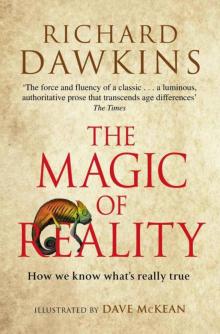 The Magic of Reality
The Magic of Reality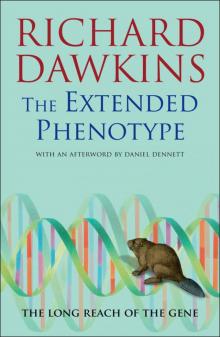 The Extended Phenotype
The Extended Phenotype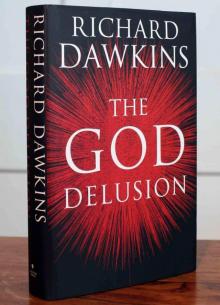 The God Delusion
The God Delusion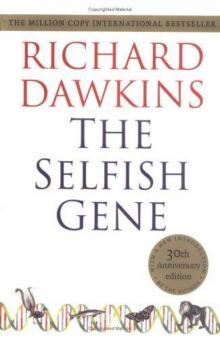 The Selfish Gene
The Selfish Gene The Blind Watchmaker
The Blind Watchmaker The Greatest Show on Earth
The Greatest Show on Earth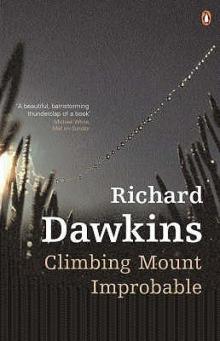 Climbing Mount Improbable
Climbing Mount Improbable Outgrowing God
Outgrowing God Brief Candle in the Dark
Brief Candle in the Dark The Greatest Show on Earth: The Evidence for Evolution
The Greatest Show on Earth: The Evidence for Evolution Science in the Soul
Science in the Soul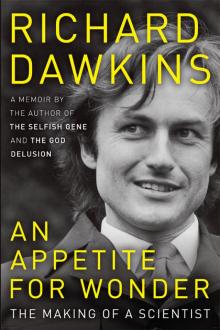 An Appetite for Wonder
An Appetite for Wonder